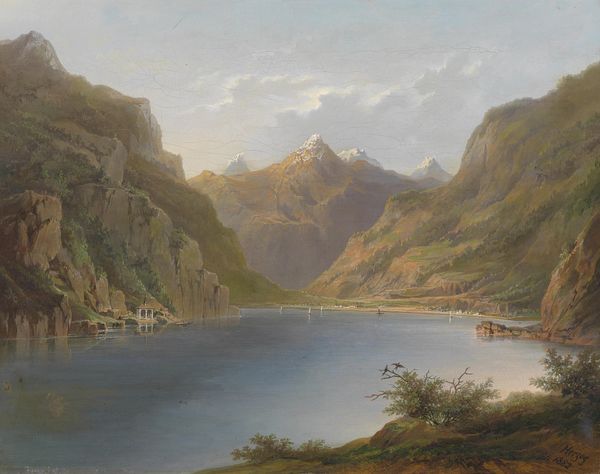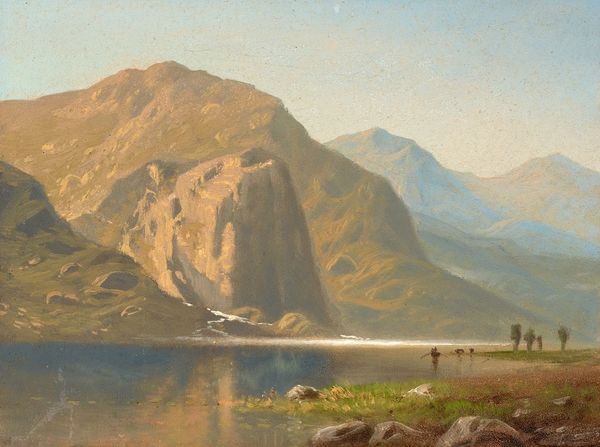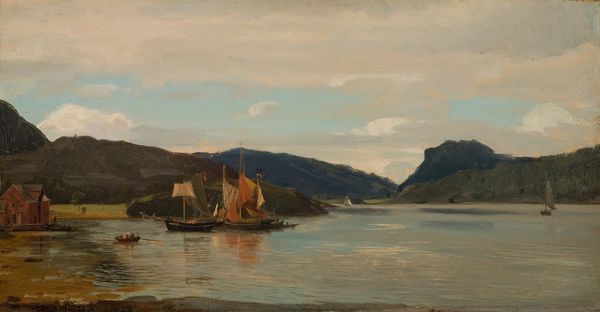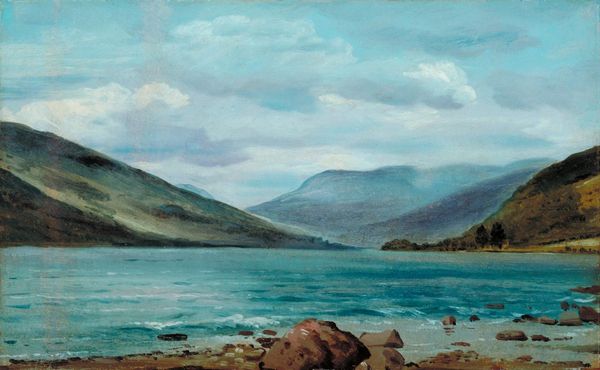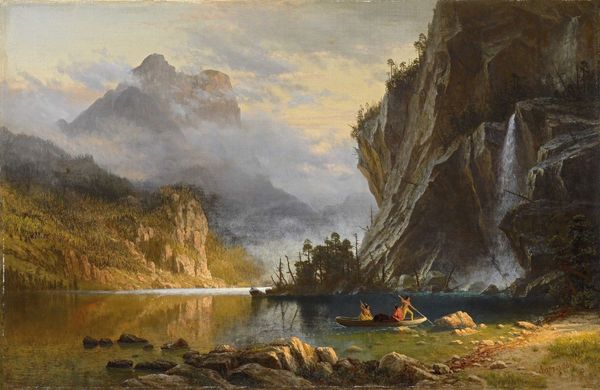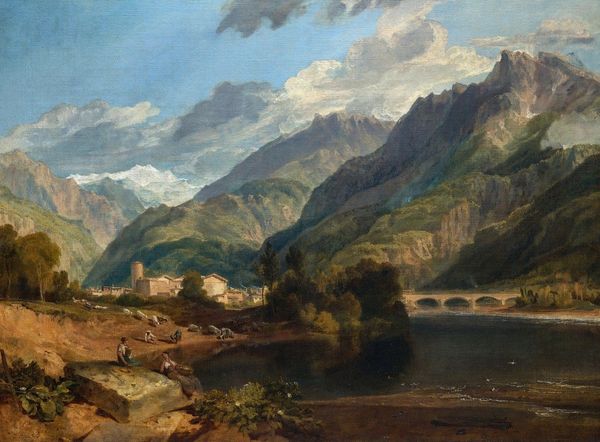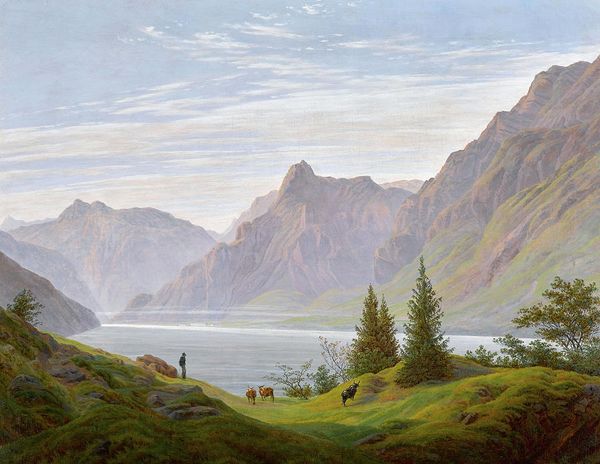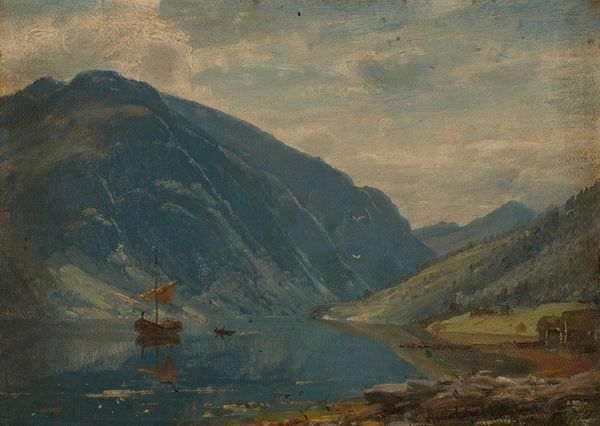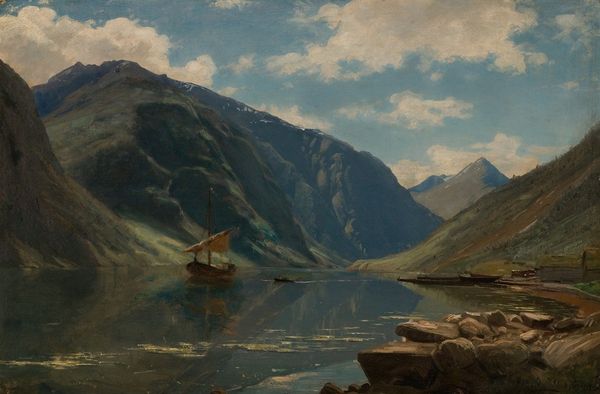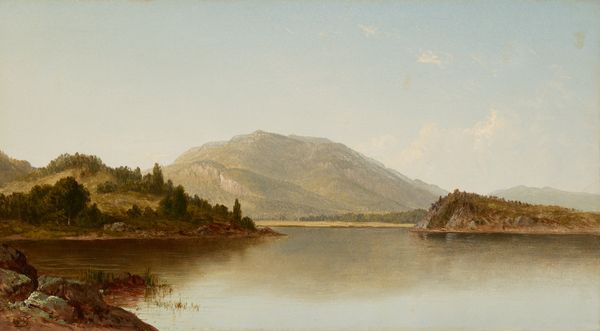
Dimensions: 56.5 cm (height) x 90 cm (width) (Netto), 67.4 cm (height) x 101.6 cm (width) x 4.2 cm (depth) (Brutto)
Curator: We are standing before Anton Melbye's 1854 oil on canvas, "Coastal Landscape with Mountains. A Storm Brewing," currently housed in the SMK, the Statens Museum for Kunst. Editor: Immediately, I get this feeling of immense, looming presence. The landscape seems to breathe—or, maybe more accurately, gasp. There's such drama in that sky! Curator: Indeed. Note how Melbye employs a clear division in the composition, bifurcating the scene between the looming storm and the relatively calm, reflective waters. It's a classic Romantic juxtaposition. Editor: Absolutely! That storm—it’s almost a character in itself, overshadowing the little figures in the boat. They look almost absurdly small against the vastness of nature's theatre. I feel an instant empathy towards them. Do you think the muted colors reinforce that feeling of vulnerability? Curator: The color palette certainly contributes to the somber mood. Beyond the representational aspect, the tonal relationships articulate a visual hierarchy, guiding the eye from the dark storm clouds down to the reflected light on the water. Notice, too, the textural variation. Melbye utilizes looser brushwork in the sky to convey the storm's dynamism and more precise, controlled strokes in the foreground for detailing the rocky coast. Editor: Right, right! I am also compelled to ask: were those painting "plein air"? I feel like some of it was probably created outside, en situ, especially in capturing the immediacy of the scene with the rapid and distinct movements. What’s fascinating is the idea of the artist facing that oncoming squall. Risky business! Curator: Given the attention to specific atmospheric conditions, it is possible that Melbye executed preparatory sketches or studies outdoors. However, the scale and finish suggest that the final painting was likely completed in the studio. Nevertheless, plein-air influence is certainly plausible. This work reveals much about Romanticism's preoccupation with the sublime and nature’s awe-inspiring power, its delicate, precarious position with people’s existence. Editor: Melbye really captured a fleeting moment, a turning point. Makes me appreciate how much art depends on moments! Looking at the formal composition to think about those dynamics and the impact they leave with you…It certainly allows me to look and connect with that historical emotional frame in a new light. Thanks!
Comments
No comments
Be the first to comment and join the conversation on the ultimate creative platform.
